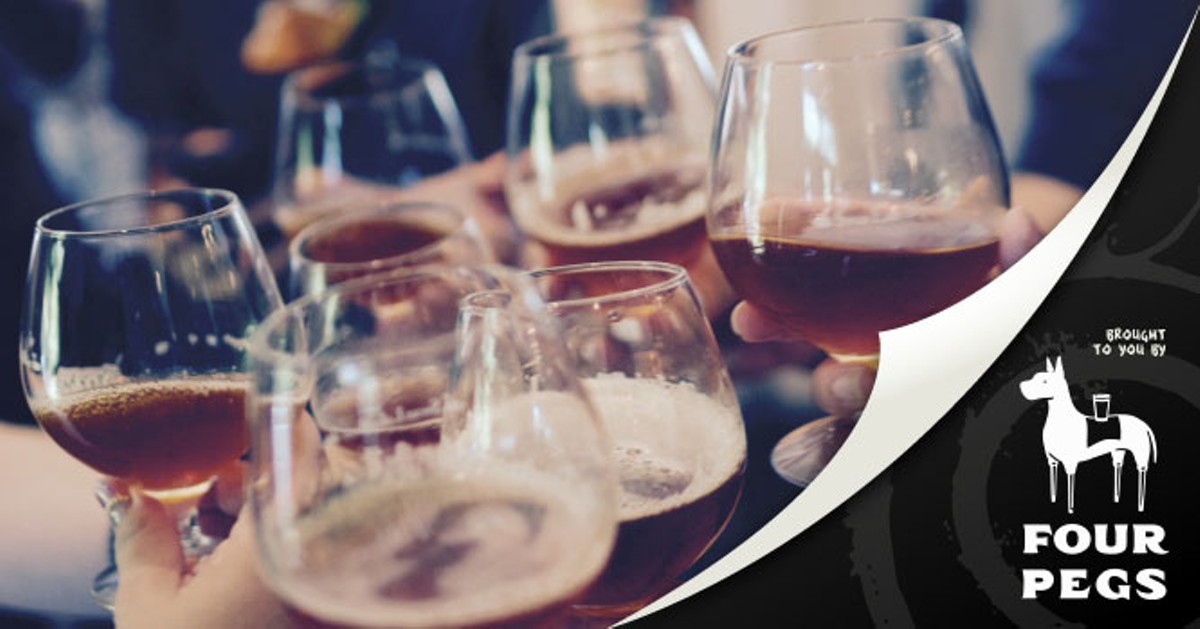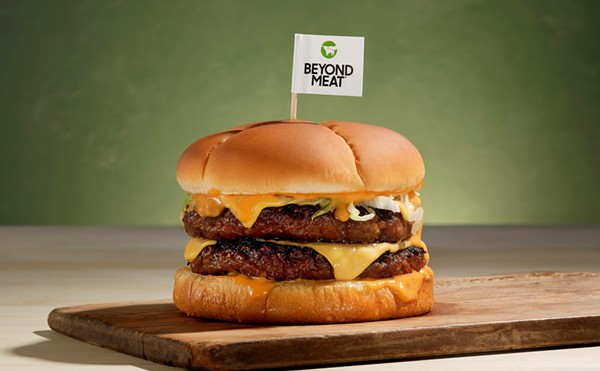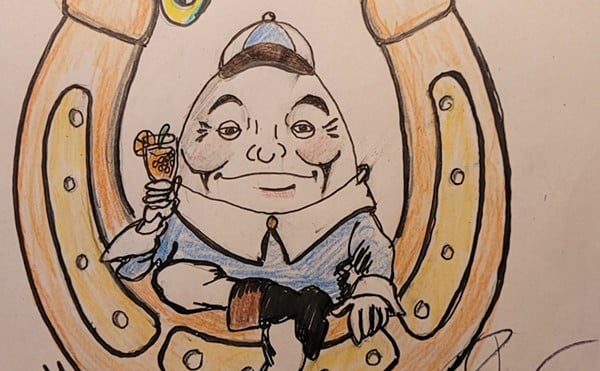I grew Cascade hops in my back yard for a couple of seasons, maybe a decade or so ago.
I didn’t use them for anything; it was really just kind of a garden experiment. Hey, they smell great, right?
Especially to a hophead.
But as they grew stronger, they started taking over the back of my house, so I decided they had to go. Ever tried to kill a hop vine? Or, rather, several hop vines that have banded together to take over planet Earth? I chopped them down, and they started growing back. I tried weed killer, and I’m pretty sure I heard them laugh at me. Finally, I poured gasoline over them and piled bricks on top of the stems still poking out of the ground. At last, they died.
I was thinking of this while in Michigan recently touring hop farms. The humulus lupulus is a quite interesting plant, and those hop cones you see in so many brewery logos are the flowers its vines produce. These cones produce strong aromas and smells and provide an essential aromatizing, flavoring and stabilizing ingredient for brewing beer.
Watching these flowers be harvested and processed is fascinating.
Especially for a hophead.
One of the farms I visited was around 200 acres with a variety of hops, including Cascade, Chinook and Sorachi Ace. Hops everywhere, in other words. And the cones weren’t just hanging from the vines... they were on the ground, underfoot, inside the processing plant — everywhere.
I happened to be traveling with one of the owners and the brewmaster of Founders, a prominent local brewery, and I observed their method of smelling a hop cone. The rare times I would actually get a fresh hop or a “wet” hop as brewers call it, in hand previously, I simply stuck my nose between the leaves and hoped for the best. Boy, was I stupid.
I watched the experts pull the cone apart, smell and then rub it between their hands to smash it up. They then buried their noses in their hands and breathed deeply to get every nuance. So I did the same thing, and the result was mind-blowing — if you think a freshly-poured IPA is a treat for the olfactory, imagine that times 10. Or 100. (Needless to say, by the end of the day, my hands were green.)
On our tours, we were walked through the process of harvesting — usually, the vines are cut at the ground, and then they are pulled from wire trellises, sometimes using heavy machinery, sometimes by hand, depending on the size of the operation. Once harvested, they are put into machines that separate the hop cones from the vines. And then the delicate process of drying the hops for pelletizing happens.
The science behind this process is fascinating; I saw giant bins that are organized like shelves. Typically, warm air in the neighborhood of 120 degrees is filtered through the hops, and there are various approaches. The demand for hops these days borders on ridiculous, so every producer is trying to become more efficient.
One farm we visited, Hop Head Farm, was using a digitally-controlled system to manage the drying of the hops to ensure maximum quality. Hopyard manager Matt Gura showed us how the system worked — frankly, the technology was a bit over my head. But one thing he said stuck with me.
“There’s still a lot we don’t know about this,” he said of the process of drying hops.
It happened to be unusually humid in Michigan this summer, and when I was there, it rained. A lot. These are not good for drying hops properly, making the job of someone like Gura difficult. He told us that many nights during harvest, he simply sleeps in his office to be sure he can constantly monitor the harvested hops. (Washington state is America’s top hop producer, with about 75 percent of national production, so I can only imagine the challenges in the rainy Northwest.)
When Gura took us to the drying bin to continue his spiel about the delicacy of the process, he encouraged everyone to take a cone and feel it. Some were dryer than others. Some flaked away, while others seemed pliable. Getting them all to blend together is the trick.
As he rubbed through a cone with his fingers, he chuckled at all the expense and difficulty of processing these little green flowers. All so people can enjoy beer.
“Sight and touch,” Gura said, looking at the cone in his hand. “That’s the magic. That’s the best moisture sensor you have.”
There are plenty of hop farms springing up around Kentucky, including one at West Sixth Brewing Co. in Lexington. Here’s hoping the trend continues. Makes me wish I had treated my hops with a little more respect.







